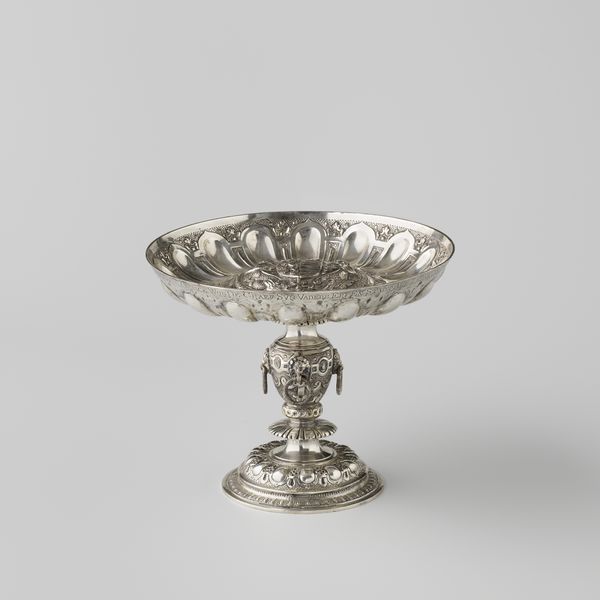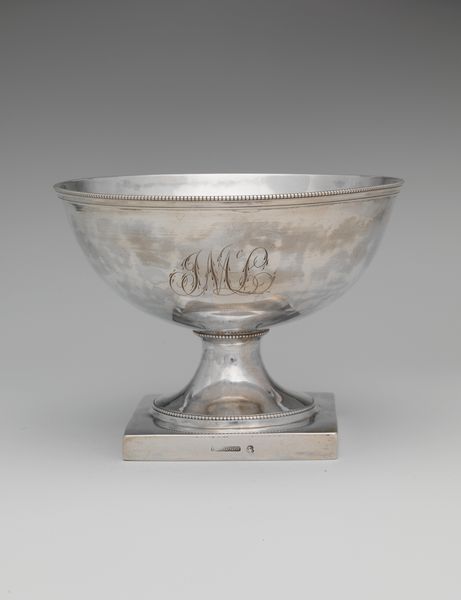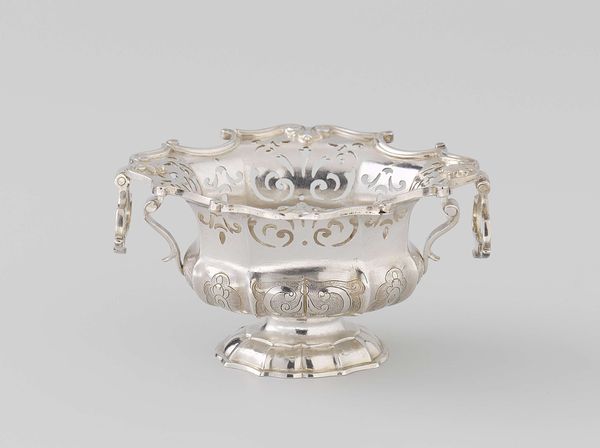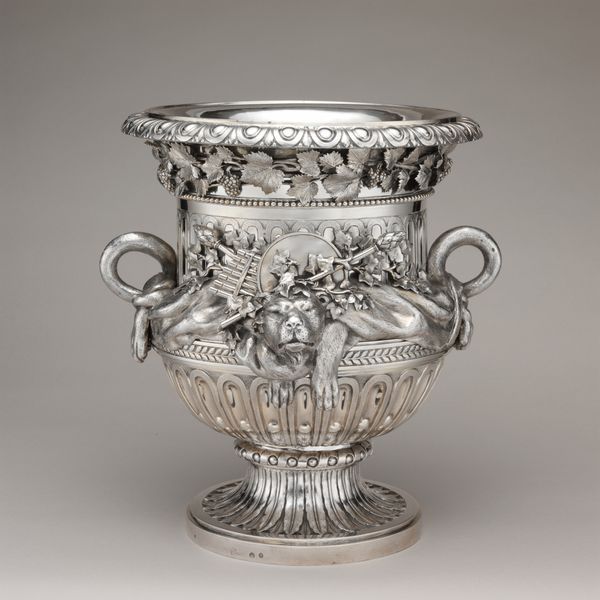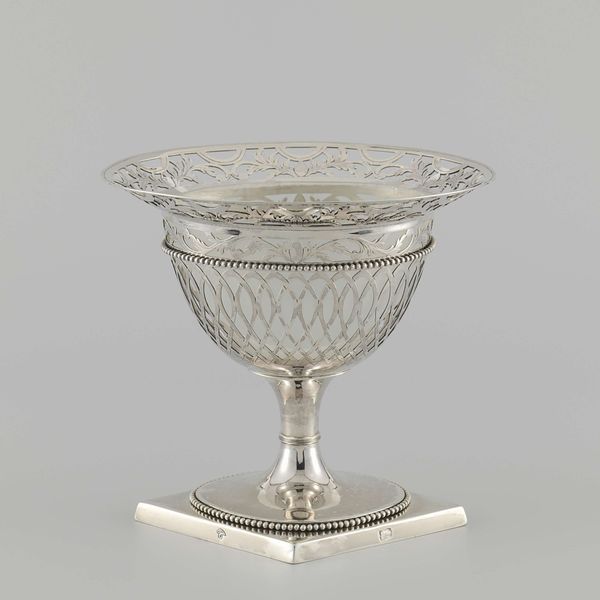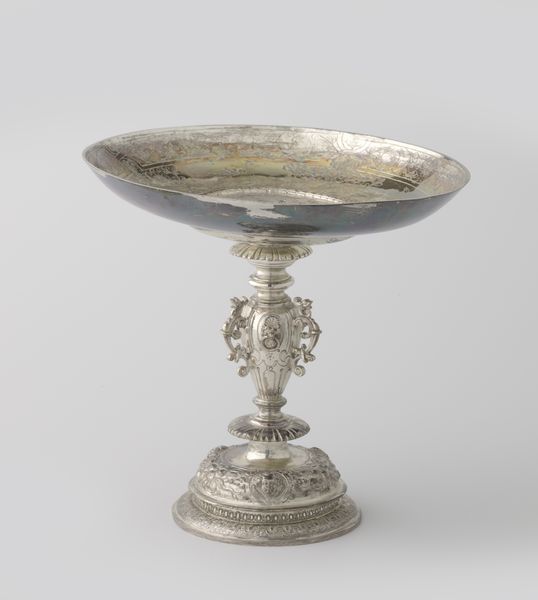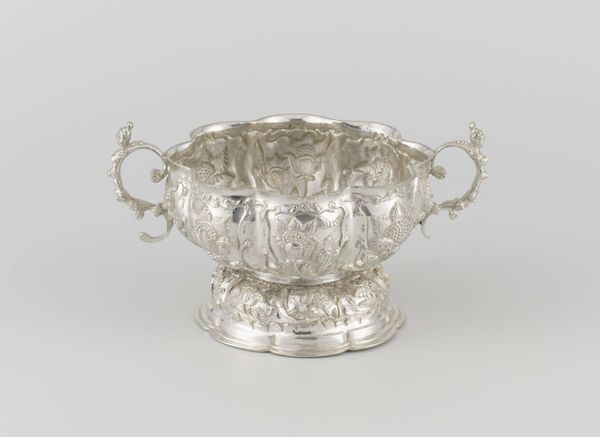
silver, sculpture
#
neoclacissism
#
silver
#
geometric
#
sculpture
#
united-states
#
decorative-art
Dimensions: Overall: H. 5 3/16 in. (13.2 cm); Diam. 6 3/16 in. (15.7 cm); 12 oz. 6 dwt. (383.2 g) Foot: 3 1/2 x 3 1/2 in. (8.9 x 8.9 cm)
Copyright: Public Domain
Editor: Here we have "Punch Bowl," crafted by Eoff and Phyfe, sometime between 1844 and 1850. It’s made of silver and resides here at the Met. It's just so…stately! All that gleaming silver and precise engraving. How would you interpret this piece? Curator: This punch bowl offers a fascinating lens through which to examine class and power in mid-19th century America. Silver objects like this weren’t just decorative; they were potent symbols of wealth and social status. Think about the labour involved in creating something so ornate. Who was pouring the punch, and for whom? What kinds of social rituals were enacted around this bowl? Editor: So it's more than just a pretty bowl? Curator: Absolutely. Consider the neoclassical design. The geometric symmetry, the delicate engravings—they all evoke a sense of order and control. Neoclassicism, in this context, was a visual language used to legitimize the power of the elite, wasn't it? By associating themselves with the aesthetics of ancient Greece and Rome, they were essentially saying, "We are the inheritors of civilization." Do you think that is still valid today? Editor: I see your point. The imagery almost naturalizes that class division. Knowing that, it definitely changes my view of it. Curator: Precisely. It’s about deconstructing these seemingly neutral objects to understand their role in perpetuating power dynamics. What does it tell us about access, privilege, and exclusion? Whose stories are missing from this gleaming surface? Editor: It's like, by appreciating its beauty without acknowledging the history, we’re almost complicit in that power dynamic. Thanks, I'll keep that in mind. Curator: Exactly, art like this compels us to question those structures. Food for thought!
Comments
No comments
Be the first to comment and join the conversation on the ultimate creative platform.
